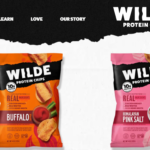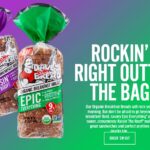After several years of product development, a start-up in the sofa industry determined that it was time to market their product. They knew who they wanted to reach and what they wanted to say. They were finally ready for prime time.
But they waited to get every part of their manufacturing perfect before they spent a nickel on any marketing effort including market research or test marketing a minimal viable product. They wanted to have all their manufacturing ducks in a row.
Unfortunately, they didn’t realize how long it takes to move customers from being unaware to aware and then on the journey toward a purchase. They also never tested their unique point of difference with consumers. Ooops.
I’d rather know as early as possible that consumers see the value and unique benefit of my product before I figure out how to make it.
Ducks in a Row
Becoming aware of a product isn’t a quick action that happens overnight. Brands compete not just within their category but for the attention of their audience from all the messages coming at them. And unless you are solving a problem better than everyone else, attention is hard to capture.
As this home furnishings company started their marketing campaign, they realized that their customers didn’t care about a core value proposition they built into every chair and sofa. They had wasted several years in figuring out how to manufacture the product ignoring the advice of a marketing expert who had suggested that they get an imperfect test product into the market quickly to see how much their customers cared about a core feature. She also recommended that they test various messages and channels of communications to see if they could efficiently breakthrough.
Are you waiting too long to involve marketing in your product launch?
When do you need to start marketing?
Even if you have a revolutionary product that is creating a new category, you need to start marketing from day one.
Maybe you start by only marketing to ten people. You need to begin your journey to understand the story your customers will tell about your product.
Ideally, you want to serve an existing community of consumers like people who are allergic to common fabric materials or consumers who need very small, sectional furniture to fit into a tight living space.
A friend of mine works for a company with an intriguing product in the electric vehicle industry. Unfortunately, they think it is for everybody and haven’t decided who the target is, and they are three years into the business. Customers tell them stories about why they bought their product. Serving so many markets, in the beginning, is a mistake. They would be better served to focus on one target and prove they can be successful before thinly spreading their efforts.
A scattered targeting approach can be lethal to business.
If you have a “me too product” with a minor benefit (gluten-free, sold in bulk, lower in carbs), you also want to start marketing early to help determine if that minor difference matters. Can you stand out and play a meaningful role in solving a customer problem. The third cereal that was gluten-free was late to the party, and no one paid much attention to it.
I did some work last year for an interesting food company who needed advice about a new category they were chasing – plant-based pasta products. They started testing concepts with consumers before they figured out how to make the product. When they did some focus groups, they gave consumers two kinds of pasta to taste. (they were identical). They showed mock-ups of packaging where one package was positioned as conventional Italian pasta and the other plant-based pasta was branded as a way for mom to get more vegetables into their kid’s mouth. The packaging declared that the vegetables were more than 50% of the formula.
The manufacturer learned that the biggest opportunity was positioning the product as a sneaky way to get your kids to eat more vegetables. They didn’t have a clue how to make the product, but they had confidence that if they could make it, mom’s would buy it.
This idea wasn’t on their radar initially. The idea came through a brainstorming session and was one of several tested. The company decided to rethink their target and their branding BEFORE they knew how to make the product based on repeated positive responses from consumers.
Through market research, they realized what job consumers would hire their pasta to do. Now they knew who needed to become aware of this product and what to say to them.
Start Early
Your marketing efforts are not the same as your advertising or communications plans. Marketing involves understanding how your product will fit into the story your customer wants to share and what is important to her.
A marketing approach is a frame of reference to help you take a first step toward the successful launch of a product.
Having your ducks in a row is overrated. Ask the Ducks.
Could you use some help figuring out how to test a minimal viable product quickly? Want some confidence that you aren’t ducking the problem? Email me at jeffreylynnslater@gmail.com 
Photo credit: http://www.publicdomainpictures.net/view-image.php?image=57806&picture=ducks-in-a-row




